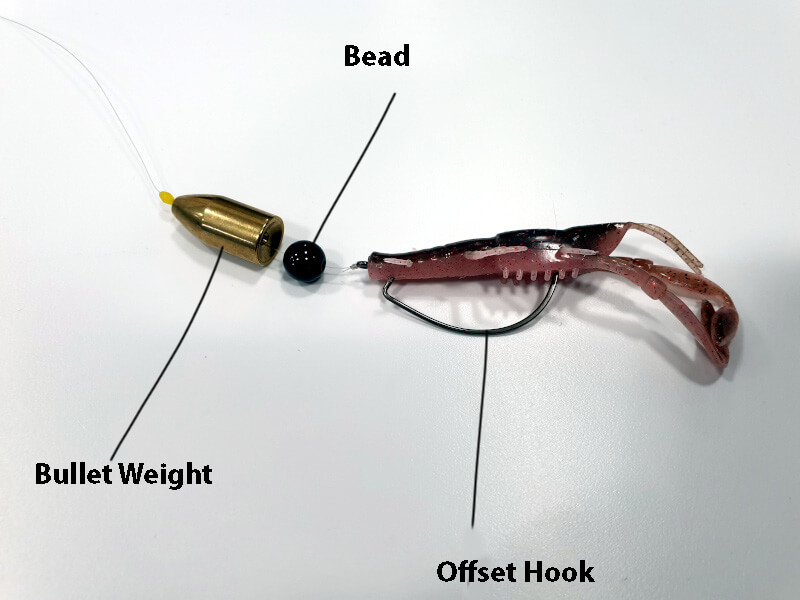
Hey there, fellow anglers! Ever had that heart-stopping moment when a bass explodes out of the water, only to have your lure snag on a submerged log? Frustrating, right? Well, I’m here to tell you that those days are over! The Texas rig is your ticket to weedless fishing bliss, and I’m about to reveal all its secrets.
Picture this: I was just a young angler, eager to catch that monster bass lurking in the murky depths of a local pond. Every cast felt like a gamble, my line snagging on lily pads and weeds more often than not. Then, a grizzled old fisherman took me under his wing and taught me the magic of the Texas rig. It changed my fishing game forever.
The Texas rig isn’t some fancy contraption with bells and whistles. It’s a simple, elegant solution to a common problem: fishing in heavy cover without constantly getting snagged. It’s basically a bullet weight threaded onto your line, followed by a bead (optional), a hook, and a soft plastic lure.
The real genius of the Texas rig is the offset hook. See, it’s got this bend in the shank that lets you bury the hook point right into the lure’s body. So, when you drag that bad boy through the weeds, the hook point stays tucked away, protected from snags. It’s like giving your lure a stealth mode!
While the Texas rig is famous for bass fishing, don’t think for a second it’s a one-trick pony. You can use it to catch catfish, crappie, and even saltwater species like redfish and speckled trout. It’s the Swiss Army knife of fishing rigs!

Let’s break down the Texas rig piece by piece, so you know exactly what you need to get started:
This is the heavy hitter of the rig. It provides the casting weight and helps your lure sink to the desired depth. You can choose from lead or tungsten weights. Lead is cheaper, but tungsten is denser, so you can use a smaller weight that won’t spook the fish as easily. The size of your weight will depend on how deep the water is and how thick the cover is.
Some anglers like to add a bead between the weight and the hook. It serves a couple of purposes: First, it protects your knot from the weight slamming into it on the cast. Second, it creates a subtle clicking sound that can attract fish. Glass or plastic beads are most common, but you can also find brass beads if you want a louder click.
This is the heart of the Texas rig. It’s got a unique shape that allows you to bury the hook point in the lure, making it weedless. Hook sizes vary, so match the hook size to the size of your lure. The most common hook types are Extra Wide Gap (EWG) and straight shank.
This is where you can get creative! There are tons of different soft plastic lures out there, from worms and lizards to crawfish and creature baits. The type of lure you choose will depend on the water conditions, the species you’re targeting, and what the fish are feeding on.
Alright, now that you have all your gear, let’s get this bad boy rigged up!
Casting a Texas rig is pretty straightforward. Just use a standard overhand cast, aiming for pockets in the weeds or other areas where bass might be hiding.
The key is to experiment and see what works best for you and the conditions you’re fishing in. Pay close attention to your line and be ready to set the hook as soon as you feel a bite.
Even experienced anglers can make mistakes with the Texas rig. Here are a few common ones to watch out for:
Let’s kick things up a notch! Once you’ve mastered the basics of the Texas rig, it’s time to explore some advanced techniques that can elevate your fishing game.
Ever had your weight slide down your line and away from your lure? Not ideal, right? Pegging the weight can help you control the lure’s fall and keep it closer to the bottom where those bass are lurking.
Flipping and pitching are techniques used to get your lure into tight spots where bass like to hide, like under docks, overhangs, or thick vegetation. It’s a more precise way to fish than casting and can be deadly effective when the fish are holding tight to cover.
Punching is a specialized technique for fishing through thick vegetation like matted hydrilla or lily pads. It requires a heavy-duty rod, heavy line, and a large tungsten weight (often 1 ounce or more). The weight is pegged to the lure to help it punch through the vegetation and reach the fish hiding underneath.
Sometimes, you need to give your lure a little extra something to get the fish to bite. That’s where rattles, scents, and trailers come in.
I’ve got one more trick up my sleeve that I call the “ChatterBait Rig.” It’s a hybrid of a Texas rig and a ChatterBait, a type of bladed jig. Here’s how it works:
This rig combines the weedless properties of a Texas rig with the vibration and flash of a ChatterBait.